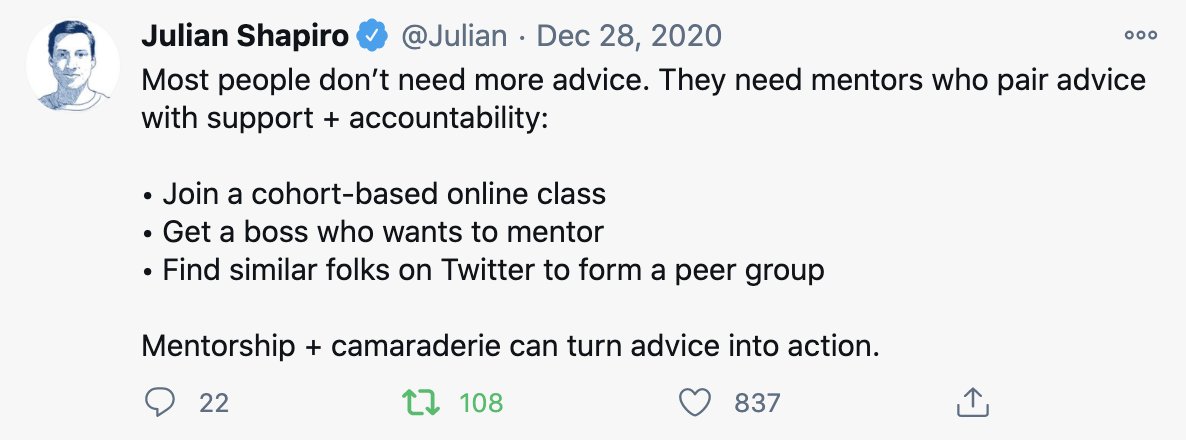And by & large, I’ve taken to call it “DevOps”, because the DevOps community have taken up much of the mantle @KentBeck & the XP community started with. & Kent has independently focused on safe small changes deployed to production. Which is DevOps.
1/
Thinking about this tweetstorm, one of the issues I’ve run into as an engineering leader is what to call the software engineering stuff that’s “agile” given that the Agile Community(tm) has killed the brand.
I might do an \u201cagile\u201d tweet storm to the effect that all the attention is to the least leveraged portions of the value stream. Interest?
— Arien Malec (@amalec) October 26, 2019
And by & large, I’ve taken to call it “DevOps”, because the DevOps community have taken up much of the mantle @KentBeck & the XP community started with. & Kent has independently focused on safe small changes deployed to production. Which is DevOps.
Much of the art here is making changes safe enough to deploy to production continuously. And to do that, we need to design incrementally, test obsessively, take architecture seriously so we decompose dependencies. & we need to automate everything & do it all the time.
It turns out that this is what Kent & @RonJeffries @GeePawHill & many other folks have been nattering on about & being broadly misunderstood. @KentBeck has some brilliant essays (scattered across FB & his site alas) & @GeePawHill has amazing twitter threads on the topic
When you look at *what it takes* to get to the DORA measures that @nicolefv & team write about in Accelerate, the input metrics for the DORA outputs, it’s making small changes safe.
As an engineering leader, I provide training, tools, mentorship, leadership development, vision, etc. to help people learn the skills needed to achieve those output metrics. And most of those skills are what @GeePawHill might call the skills of making.
Unfortunately many of those skills are deeply counterintuitive & much of the work is as much unlearning as learning. For example, there’s an implicit definition of work as writing new code, or even writing code.
Because that’s what engineers love to do, and because there are emotional and sometimes financial incentives to make customer visible functionality, we need to overcorrect sometimes on focusing on the tools of making.
Providing visibility & reward for the people who build the CI/CD tooling or build a deployment pipeline that automates acceptance testing, or figure out how to do AppMesh with Terraform as a module or automates linters & code coverage tools in the pipelines.
Great teams end up spending most of their time building user facing functionality because they build the tools of making and sweat automation, IoT, design, architecture, code quality & test automation. Less successful teams try to write lots of code & get stuck.
More from Twitter
You May Also Like
First thread of the year because I have time during MCO. As requested, a thread on the gods and spirits of Malay folk religion. Some are indigenous, some are of Indian origin, some have Islamic
Before I begin, it might be worth explaining the Malay conception of the spirit world. At its deepest level, Malay religious belief is animist. All living beings and even certain objects are said to have a soul. Natural phenomena are either controlled by or personified as spirits
Although these beings had to be respected, not all of them were powerful enough to be considered gods. Offerings would be made to the spirits that had greater influence on human life. Spells and incantations would invoke their
Two known examples of such elemental spirits that had god-like status are Raja Angin (king of the wind) and Mambang Tali Arus (spirit of river currents). There were undoubtedly many more which have been lost to time
Contact with ancient India brought the influence of Hinduism and Buddhism to SEA. What we now call Hinduism similarly developed in India out of native animism and the more formal Vedic tradition. This can be seen in the multitude of sacred animals and location-specific Hindu gods
i wonder if you can make a thread bout witchcraft in malaysia.. or list of our own local gods/deites..
— r a y a \U0001f319 (@lcvelylilith) February 20, 2020
Before I begin, it might be worth explaining the Malay conception of the spirit world. At its deepest level, Malay religious belief is animist. All living beings and even certain objects are said to have a soul. Natural phenomena are either controlled by or personified as spirits
Although these beings had to be respected, not all of them were powerful enough to be considered gods. Offerings would be made to the spirits that had greater influence on human life. Spells and incantations would invoke their
Animist ceremonies of a religious or magical nature were normally held for the purpose of divination or making a request. This would either be done at a keramat or at a shrine similar to the Thai spirit houses or Chinese roadside shrines pic.twitter.com/I1hliyi0x3
— \u2745\u1710\u170b\u1713\u170e (@uglyluhan) June 16, 2019
Two known examples of such elemental spirits that had god-like status are Raja Angin (king of the wind) and Mambang Tali Arus (spirit of river currents). There were undoubtedly many more which have been lost to time
Contact with ancient India brought the influence of Hinduism and Buddhism to SEA. What we now call Hinduism similarly developed in India out of native animism and the more formal Vedic tradition. This can be seen in the multitude of sacred animals and location-specific Hindu gods





















